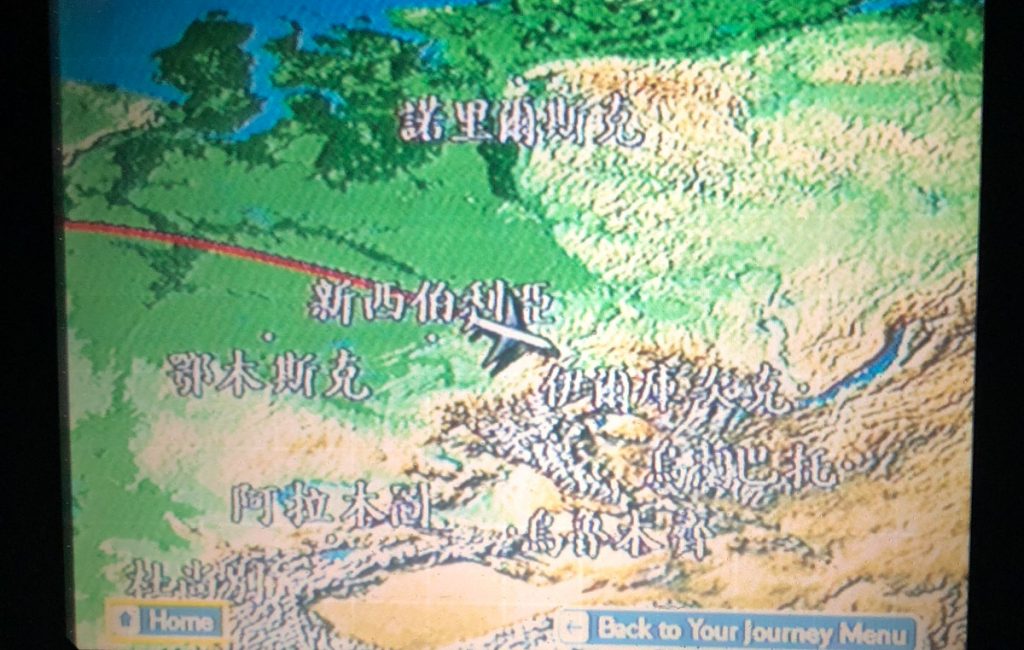Papierkram auf Chinesisch
Wer über die deutsche Bürokratie schimpft, kennt die chinesische nicht! Die mündliche Zusage zu meinem neuen Job in China ist ja einigermaßen schnell gegeben, aber dann geht es erst richtig los, was den eigentlichen formalen Entsendeprozess angeht. Ich will mal versuchen, die nötigen Schritte zusammenzufassen. Aktuell ist es üblich, dass der Mitarbeiter mit der Wechselabsicht eine Orientierungsreise ins Gastland bezahlt bekommt. Einerseits um sich zu orientieren, aber auch um die ersten Formalien direkt Vorort zu klären. Für die Orientierungsreise ist nur ein konventioneller Reiseantrag nötig. Der Unterschriftenaufwand ist noch echt überschaubar, um nicht zu sagen harmlos. Weiter geht es mit einem Invitation Letter der einladenden Organisation – ohne Invitation Letter kein Visum und ohne Visum keine Einreise. Hier lauern schon die ersten Fallstricke. Natürlich gibt es verschiedene Visatypen, zum Beispiel für einmalige oder mehrfache Einreise. Der Antrag für das Visum ist schon deutlich komplizierter und nicht mehr an jeder Stelle selbsterklärend. Also Antrag, Reisepass und Rechnungsadresse zum Visumservice geschickt und die Herren kümmern sich dann um den Rest. An dieser Stelle ist zu beachten, dass zwischen Antrag des Visums und Reisebeginn genügend Zeit eingeplant wird! Parallel noch fix Hotel und Flug von der Teamassistentin buchen lassen und schon kann es losgehen.
In China angekommen muss man die gelbe Arrival Card dem Immigration Officer seines Vertrauens zusammen mit dem Reisepass übergeben. Den Reisepass bekommt man nach dem Abstempeln zurück, die Arrival Card nicht.
Bestandteil der Orientierungsreise ist auch die geführte Wohnungssuche, für die man natürlich vorab einen Fragebogen ausgefüllt hat, in dem man seine Wunschwohnung charakterisiert: Lage, Zimmerzahl, Mietbudget usw…
In der gleichen Woche wird man noch zum Gesundheitscheck gebeten, dessen Bestehen zwingende Voraussetzung für den Erhalt einer Arbeitserlaubnis in China ist. Dabei fallen auch noch ein paar Dokumente an.
Und schon ist die Orientierungsreise zu Ende und zur Ausreise wird man noch gebeten, die Departure Card auszufüllen. Das war’s schon für die Orientierungsreise. Es hat auch kein Zettel oder Stempel gefehlt, sodass alles ganz easy abgelaufen ist.
Weiter geht es mit dem Papierkram in Deutschland für die eigentliche Übersiedlung. Nun sind ein paar mehr Dokumente gefragt. Wieder geht es mit einem Invitation Letter los. Man benötigt dann noch eine Bestätigung, dass man auch die nötigen Arbeitsqualifikationen hat. Dies wird mit einem Zettel, der den schönen Titel „Proof of Working Experiance“ trägt, vom Arbeitgeber erledigt. Ferner wird noch ein polizeiliches Führungszeugnis mit Überbeglaubigung von den chinesischen Behörden verlangt. Von einer Überbeglaubigung habe ich das erste Mal in meinem Leben gehört, das heißt aber eigentlich nur, dass auf dem Zettel noch eine deutsche Autoritätsperson einen Stempel und seinen Kringel anbringen muss. Da die chinesischen Behörden ja nicht alle Sprachen dieser Welt beherrschen, ist noch eine beglaubigte Übersetzung notwendig.
Da ich Deutschland zeitweise verlasse, fühlt sich die deutsche Krankenversicherung nicht mehr richtig zuständig, was ich irgendwie verstehen kann. Aber vollständig unzuständig fühlt sie sich dann aber auch wieder nicht, deshalb benötige ich zur Wahrung meiner Ansprüche auf die Rückkehr in die deutsche Krankenversicherung nach Abschluss meines Auslandabenteuers eine sogenannte Anwartschaft, für die ich monatlich einen kleinen Obolus entrichten muss. Damit ich aber weiterhin in China und überall sonst auf der Welt versichert bin, schließt die Firma für mich noch eine private Krankenversicherung ab. Dies zieht ein weiteres Antragsformular nach sich.
Nun geht es langsam an die Einreise nach China. Da ich jetzt nicht mehr nur für eine Geschäftsreise nach China einreisen möchte, benötige ich natürlich ein anderes Einreisevisum, das sogenannte Z-Visum, welches in der chinesischen Botschaft in Deutschland ausgestellt wird. An der Grenze gilt es wieder, die gelbe Arrival Card zusammen mit dem Reisepass abzugeben. Unmittelbar nach der Einreise muss ich nun am Zoll meine unbegleitete Luftfracht deklarieren, dafür existiert Gott sei Dank ein eigens dafür vorgesehenes Formular.
In den vergangenen Wochen waren auch mein Arbeitgeber und die chinesischen Behörden fleißig und haben weitere Papiere kreiert, zum Beispiel meinen Health Inspektion Record, mein Employment Agreement, den Notification Letter of Foreigners Work Permit. Dieser Zettel ist allerdings nur ein Provisorium, bis ich meine finale Work Permit in Form einer kleinen grünen Plastikkarte bekomme.
Als Abschluss all dieser Anstrengungen bekomme ich ca. 3 Wochen nach meiner Übersiedlung noch den ersehnten Aufkleber mit dem etwas sperrigen Titel „Residence Permit for Foreigner in the Peoples Republic of China“ in meinen Reisepass geklebt, womit die Bürokratie auch schon ihr abruptes, aber nicht unerwartetes, Ende findet.
Aus Erfahrung kann ich sagen, beim zweiten Mal erscheint das Prozedere viel einfacher und klarer als beim ersten Mal…
Hier nochmal die Dokumentenschnellcheckliste als Taschenleitfaden (ohne Gewähr):
Orientierungsreise
– Reiseantrag
– Geschäftsvisum (mit Einfach- oder Mehrfacheinreise)
– Hotelbuchung
– Flugbuchung
– frische Passbilder
– Invitation Letter
– gelber Border Immigrationschein für die Einreise
– Absolvierung Gesundheitscheck (inklusive Fragebogen)
– Fragebogen vom Makler zur Wunschwohnung
– gelber Border Immigrationschein für die Ausreise
Zum Arbeitsantritt
– Reiseantrag
– Invitation Letter
– Flugbuchung
– Proof of Working Experience
– Abmeldung gesetzliche Krankenkasse
– Anwartschaft für deutsche Krankenversicherung
– Private weltweit gültige Krankenversicherung
– Polizeiliches Führungszeugnis mit Überbeglaubigung
– amtlich anerkannte Übersetzung des Führungszeugnisses
– und wieder der gelbe Border Immigrationschein für die Einreise
– Notification Letter of Foreigners Work Permit (gilt nur für 3 Monate)
– Health Inspection Record
– Employment Agreement
– Working Permit (grüne Plastikkarte)
– Residence Permit
– Luftfracht Fragebogen (was, wie viele, wie teuer)
– Luftfracht customs Einreiseformular als Zollerklärung
===================== ENGLISH VERSION =====================
Paperwork á la Chinese
Anyone who complains about German bureaucracy does not know the Chinese one! The oral confirmation of my new job in China is given fairly quickly, but then things really get going as far as the actual formal secondment process is concerned. Let me try to summarize the necessary steps. Currently, it is customary for the employee to be paid for an orientation trip to the host country with the intention of switching. On the one hand to orientate yourself, but also to clarify the first formalities directly on site. Only a conventional travel request is required for the orientation trip. The amount of signatures required is still quite manageable, not to say harmless. It continues with an Invitation Letter of the inviting organization – without Invitation Letter no visa and without visa no entry. The first pitfalls are already lurking here. Of course there are different types of visas, for example for single or multiple entries. The application for a visa is already much more complicated and no longer self-explanatory at every point. So application, passport and billing address are sent to the visa service and the gentlemen take care of the rest. At this point it should be noted that sufficient time is planned between the application of the visa and the start of the trip! Let the team assistant book the hotel and flight at the same time and off you go.
Once in China, the yellow arrival card must be handed over to the immigration officer of your choice together with your passport. You get your passport back after you stamp it, but not your Arrival Card.
Part of the orientation trip is also the guided apartment search, for which you have of course filled out a questionnaire in which you characterize your desired apartment: Location, number of rooms, rental budget etc…
In the same week you will be asked for a health check, the passing of which is a prerequisite for obtaining a work permit in China. There are also a few documents.
And already the orientation journey is over and to the departure one is asked still to fill out the Departure Card. That’s it for the orientation trip. There was also no note or stamp missing, so that everything went very smoothly.
We continue with the paperwork in Germany for the actual move. Now a few more documents are needed. Again we start with an invitation letter. You then need confirmation that you also have the necessary work qualifications. This is done by the employer with a note with the beautiful title „Proof of Working Experiance“. Furthermore, the Chinese authorities require a police clearance certificate with over-certification. I have heard of an over-authentication for the first time in my life, but that actually only means that a German authority has to put a stamp and his curl on the piece of paper. Since the Chinese authorities do not speak all the languages of the world, a certified translation is still required.
Since I leave Germany for a while, German health insurance no longer feels properly responsible, which I can somehow understand. But then she doesn’t feel completely incompetent either, which is why I need a so-called expectancy to preserve my rights to return to German health insurance after I have completed my adventure abroad, for which I have to pay a small monthly fee. But so that I can continue to be insured in China and all over the world, the company still takes out private health insurance for me. This entails another application form.
Now we are slowly entering China. Since I no longer only want to enter China for a business trip, I naturally need another entry visa, the so-called Z-visa, which is issued in the Chinese embassy in Germany. At the border, you must return the yellow Arrival Card together with your passport. Immediately after my entry I have to declare my unaccompanied airfreight at customs, thank God there is a special form for this.
In recent weeks, my employer and the Chinese authorities have also been busy creating other papers, such as my Health Inspection Record, my Employment Agreement, the Notification Letter of Foreigners Work Permit. However, this note is only a temporary solution until I get my final work permit in the form of a small green plastic card.
As a conclusion of all these efforts, about 3 weeks after my relocation I still get the desired sticker with the somewhat bulky title „Residence Permit for Foreigner in the Peoples Republic of China“ stuck in my passport, with which the bureaucracy has already made its abrupt, but not unpleasant, end.
From experience I can say, the second time the procedure seems much simpler and clearer than the first time…
Here again the document quick checklist as pocket guide (without guarantee):
Orientation journey
– Travel authorization request
– Business visa (single or multiple entry)
– Hotel booking
– Flight reservation
– Fresh passport photographs
– Invitation letter
– Yellow Border immigration card for entry
– Completion of health check (including questionnaire)
– Questionnaire from broker to desired flat
– Yellow Border Immigration Certificate for leaving the country
To the start of work
– Travel authorization request
– Invitation letter
– Flight reservation
– Proof of Working Experience
– Deregistration from statutory health insurance
– Eligibility for German health insurance
– Private health insurance valid worldwide
– Police clearance certificate with over-certification
– Officially recognized translation of the certificate of good conduct
– And again the yellow Border Immigration Certificate for entry
– Notification Letter of Foreigners Work Permit (valid for 3 months only)
– Health Inspection Record
– Employment agreement
– Working Permit (green plastic card)
– Residence permit
– Air Freight Questionnaire (what, how many, how expensive)
– Airfreight customs entry form as customs declaration

